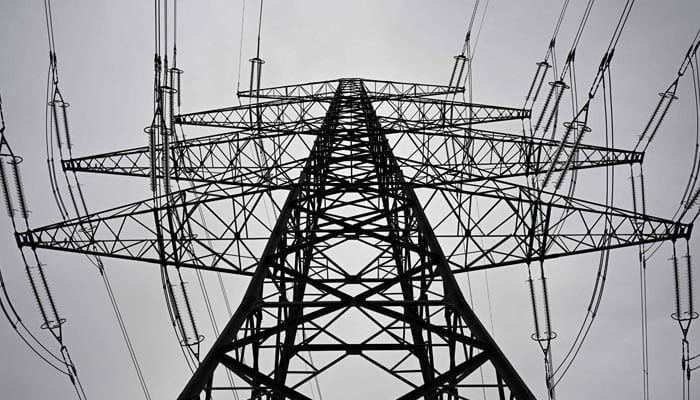
A representational image of a transmission tower, also known as an electricity pylon. — AFP/File
ISLAMABAD: Consumers can expect a 10 percent reduction in their electricity bills by 2031, following the signing of a major circular debt elimination plan on Thursday. The initiative, which will retire Power Holding Limited (PHL) debt and clear dues to Independent Power Producers (IPPs), was confirmed by senior Power Division officials.
Once the Rs1.225 trillion loan is fully repaid—projected between 2029 and 2031—the Debt Service Surcharge (DSS) of Rs3.23 per unit, currently included in electricity bills to service the financing, will also be eliminated.
Pakistan has taken a landmark step in resolving its long-standing circular debt crisis with the finalisation of a Rs1.225 trillion syndicated Islamic financing deal—the largest structured financial transaction in the country’s energy sector history. The agreement, signed with the participation of 18 leading commercial banks and based on Islamic finance principles, aims to inject much-needed liquidity into Pakistan’s power sector while laying the foundation for long-term fiscal and structural reform. Although immediate relief may not be visible in consumer bills, officials emphasise that the long-term benefits will be substantial.
Even before the repayment is completed, the deal avoids Rs 350-377 billion in late payment interest—a cost that would otherwise have been passed on to consumers under previous debt arrangements. In addition, the liquidity will stabilise operations across generation and distribution companies, reducing power outages, fuel shortages, and abrupt tariff increases.
The financing structure is built around three Islamic instruments—Bai’ Muajjal, Ijara, and the issuance of Sukuk on the Pakistan Stock Exchange. It replaces the traditional model of government bailouts with a predictable, market-based repayment mechanism. The entire facility will be serviced through the existing DSS, ensuring no additional burden on public finances. The profit rate, set at KIBOR minus 0.90%, is significantly lower than conventional market rates, reflecting lender confidence in the structure and the underlying reform process.
By mid-2025, Pakistan’s circular debt had reached an unsustainable Rs2.4 trillion, or roughly 2.1pc of GDP. The power sector—long crippled by unpaid bills, delayed subsidies, and systemic inefficiencies—had become a chronic drag on the economy. For years, governments responded with ad hoc fixes, emergency loans, and unsustainable guarantees. This latest move, officials say, marks a decisive departure from that cycle. “This is not just another bailout. It is a structural reform built on transparency, discipline, and institutional collaboration,” said a senior official involved in the transaction. “It’s a model that restores trust in the energy sector and shows that Pakistan can still deliver complex solutions.” The deal’s success required an unusual level of coordination across civilian and military leadership—a rare case of institutional alignment in Pakistan’s often fragmented governance landscape. Lt. Gen (retd.) Zafar Iqbal played a key role in coordinating inter-agency execution, ensuring discipline and protecting the process from vested interests. Behind the scenes, Army Chief Field Marshal Syed Asim Munir was regularly briefed and provided strategic direction, recognising the issue as one of national importance. Muhammad Ali, Minister for Privatisation and a member of the Prime Minister’s Energy Task Force, also worked closely to execute the transaction.

